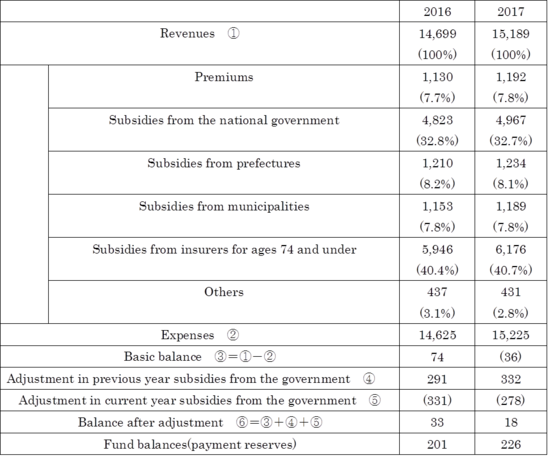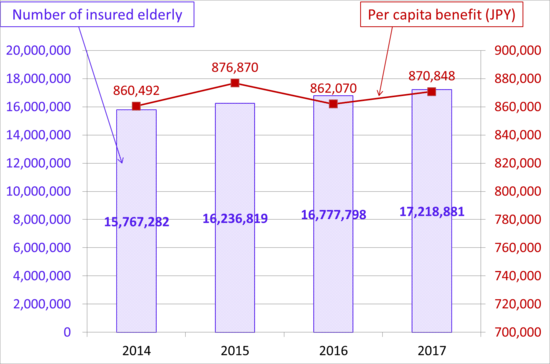Column Finance and the Social Security System 2019.06.13
【Aging, safety net and fiscal crisis in Japan】No.193: Fiscal Balance of the Latter-Stage Elderly Medical Care System in 2017
In April 2019, the Ministry of Health, Labour and Welfare announced the 2017 fiscal balance of the latter-stage elderly medical care system. The system is a form of public insurance in which elderly people aged 75 or older are obliged to join.
As shown in Table 1, the percentage of premiums paid by seniors aged over 75 to the total revenues was 7.8% in 2017. A major portion of the financial resources comes from taxes and subsidies from the working generation's insurance system. The balance in 2017 was a surplus of JPY 18 billion. As shown in Figure 1, the number of insured elderly continues to increase, reflecting the increasing number of elderly people.


